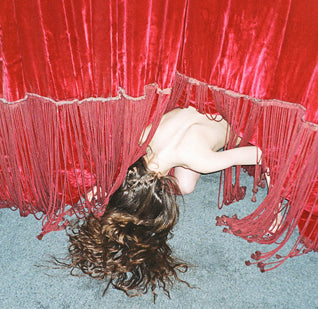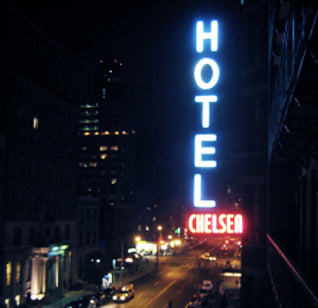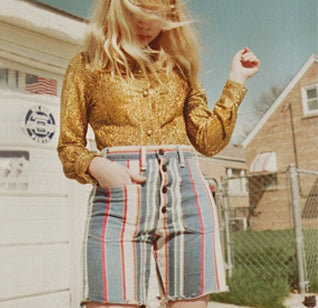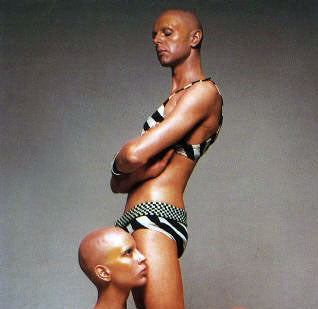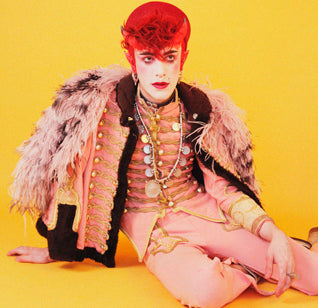MILEY CYRUS AND THE TERRIBLE CASE OF MISTAKEN IDENTITY
Art Blasphemy: Jeffery Dietch compares tween pop star to Mike Kelley
by Ellie Howard
There are many things you’d expect to see at Art Basel: Financiers wives’ puffed-up collagen pouts posing in Jeff Koons’ reflective ‘Woman Reclining’ sculpture, trying to catch a glimpse of Kim Kardashian’s shapely behind moving amongst flashing artworks such as Doug Aitken's EXIT (large) (2014). Bottles of Riunart Champagne being quaffed while dealers and collectors attempt to theorize stark white canvases.
And Miley Cyrus’s psychedelic tweenie bong sculpture.

Deodorized Central Mass with Satellites Series - Mike Kelley, 1991/1999.
And the fun doesn’t stop there, former director of Museum of Contemporary Art, Los Angles and controversial curator Jeffery Deitch sycophantically enthused she was in fact, the ‘real deal’. He then added a truckload of fuel to an already voracious fire by stating, ‘It's southern outsider art, very close to Mike Kelley. We have a remarkable situation where someone channels her vision through music, art, theatre, and fashion."

Miley Cyrus at the opening of her exhibition, "Dirty Hippie." at Art Basel 2014
This comes after V-Magazine’s decision to exhibit Cyrus’s ‘Dirty Hippy’ series at their main offices from 11 Sept. The manufactured pop star, known for her salacious tongue flapping and twerk-a-thons has outraged art-impresarios and mothers across the country. In an interview with V-Magazine’s Arts Editor Kevin Mcgarry, Cyrus shared the thought-process behind her provocative sculptures: “If you drink a lot of pineapple Juice you’re going to have yummy cum. So that’s why I put it on the dick with a bunch of babies, and it says, ‘Fuck’. I try to think about everything so it has a story to me… This seems so fucking lame to say but I feel like my art became a kind of metaphor – an example of my life. Because a bunch of shitty things kept happening”.
This coming from the girl who cites the death of her dog as one of the worst things to ever happen in her ENTIRE life.

Carmen - Mike Kelley & Aura Rosenberg, 1996–98, from the series “Who Am I? What Am I? Where Am I?,”.
While heading up the MOCA, Deitch was heavily criticised by the museum’s trustee board for his ‘celebrity-driven programme’, which he used to promote exhibitions after the Museum vastly over-spent its financial budget. The use of a kitschy tabloid star as sales pawn to publicise his own projects, is a shameful commodification of art on the curator’s behalf. Even more shocking is his blasphemous usage of Mike Kelley’s name in the same sentence as the trashy pop star, not to mention the inappropriate sarcasm associated with such an attention-seeking comment.

Inspired by pop culture, one of Kelley’s last works was a collaborative sculpture series entitled Kandor, after the city on planet Krypton from which Superman escaped.
Sadly in 2012, Mike Kelley took his own life. The late artist was described by The New York Times as “one of the most influential American Artists of the past quarter century and a pungent commentator on American class, popular culture and youthful rebellion”. Most famous for his use of junk shop treasure: Afghan crocheted blankets, fabric dolls and rag toys found in local thrift stores, embodied within his masterpiece “More Love Hours Than Can Ever Be Repaid” 1987. The soft bodies of these toys, their limbs tangled into clusters became a satirical metaphor for expressionist art and a key element of Kelley’s artistic vocabulary. Jerry Staltz even neologised the word “clusterfuck” while trying to comprehend the artist’s fluffy landscapes. At first Kelley did not realise his toy monsters were monstrous; he worked with craft objects as he identified them as ‘gifts’. This idea of a gift represented by a toy, was symbolic of the escape of commodification of art.

More Love Hours Than Can Ever Be Repaid- Mike Kelley, 1987
Kelley’s life’s work was about anti-capitalism; he despised the consumption of his stuffed toy aesthetic. Yes, he openly encouraged plagiarism; he understood it as a necessary component of cultural progression, however he hated the idea of his work as being a merchandisable product. Kelley was always a game-changer, he understood that contemporary art was a fleeting concept with no real context of history, instead it was a high-school popularity contest and mass media was the ultimate critic.

Day is Done installation - Mike Kelley, 2005
In a conversation with Interview Magazine, Kelley posthumously weighs in on the debate, saying “Young people who would have previously gone into careers in indie rock-which is one of the few arenas where a young person with no particular talent can make some money-can now accomplish the same thing in the art world”. We wonder what the artist would have thought of Cyrus being put into the category ‘Outsider Art’, let alone Dietrich’s comparison…
Kelley states, “New art is very anti-intellectual, it doesn’t need explication, the market is its explication…the art scene is now almost a mirror of the entertainment industry”. With modern masters such as Damien Hirst and Jeff Koons dominating art fairs such as Art Basel, collectors snapping up anything that resembles a shiny Lamborghini in the hope it will make a lucrative return, the traditional ‘art fair’ is fast losing its integrity.

Ousted MOCA Director Jeffrey Deitch.
When Kelley became an artist with the knowledge that he would essentially alienate yourself from society. He didn’t seek recognition or validation through fame, like some of his peers over in NYC. He had an innate feel for the art market, even though he detested its gentrification and the transformation it was asserting. Looking back at the Interview conversation held a year before the artist’s death, a lack of faith seeps through his words and twists into the foundations of a larger existential problem. Perhaps this is what killed Mike Kelley, we will never know. Either way, Dietrich’s comment is just another bullet in the brain for such a talented and revered artist. We pay our respects.












